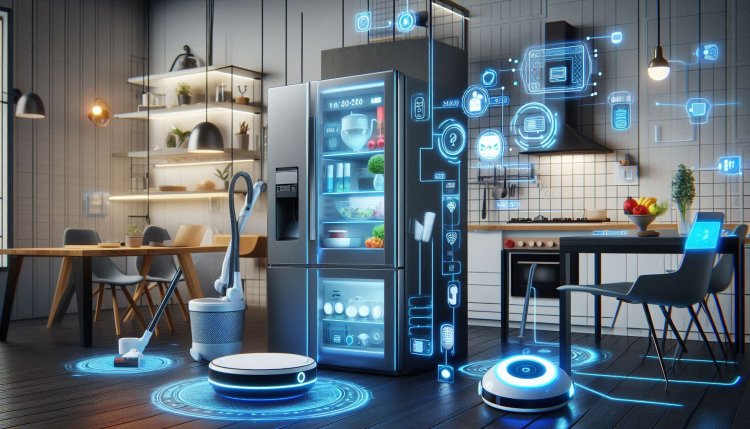Internet of Things (IoT)
Unlock the potential of connecting devices and data with Internet of Things (IoT), revolutionizing how we live and work in a smart, connected world.

Internet of Things (IoT)
The Internet of Things (IoT) refers to the network of interconnected devices, vehicles, appliances, and other objects embedded with sensors, software, and connectivity that enables them to collect and exchange data over the internet. This concept extends the power of the internet beyond computers and smartphones to a wide range of physical devices.
Key Components of IoT
There are several key components that make up the Internet of Things ecosystem:
- Devices and Sensors: IoT devices are equipped with sensors that collect data such as temperature, light, motion, and more. These devices can range from simple wearables to sophisticated industrial machinery.
- Connectivity: IoT devices use different connectivity options such as Wi-Fi, Bluetooth, Zigbee, and cellular networks to transmit data to the cloud or other devices.
- Data Processing: The data collected by IoT devices is processed and analyzed to extract valuable insights. This can be done locally on the device or in the cloud.
- Cloud Computing: IoT devices often leverage cloud computing services to store and process data. Cloud platforms provide scalability and flexibility for IoT applications.
- User Interface: IoT applications have user interfaces that allow users to interact with and control connected devices. This can be through mobile apps, web interfaces, or voice commands.
Applications of IoT
The Internet of Things has a wide range of applications across various industries:
- Smart Home: IoT enables homeowners to control and automate various devices in their homes, such as thermostats, lights, security cameras, and appliances, using their smartphones or voice commands.
- Healthcare: IoT devices are used in healthcare for remote patient monitoring, tracking medical assets, and managing inventory. Wearable devices can track vital signs and provide real-time health data.
- Smart Cities: IoT technologies are being used to create smart cities that optimize energy usage, improve traffic flow, monitor air quality, and enhance public safety through connected infrastructure.
- Industrial IoT (IIoT): In manufacturing and industrial settings, IoT devices are used to monitor equipment performance, track inventory, optimize production processes, and enable predictive maintenance.
- Agriculture: IoT is revolutionizing agriculture with precision farming techniques that use sensors to monitor soil conditions, crop health, and weather patterns to optimize crop yield and reduce resource waste.
Challenges and Security Issues
While IoT offers numerous benefits, there are also challenges and security issues associated with the proliferation of connected devices:
- Interoperability: IoT devices from different manufacturers may not be compatible with each other, leading to interoperability issues that can hinder the seamless integration of devices.
- Privacy Concerns: The vast amount of data collected by IoT devices raises concerns about privacy and data security. Unauthorized access to sensitive information can lead to breaches and misuse of personal data.
- Security Vulnerabilities: IoT devices are often targeted by hackers due to security vulnerabilities in their software and lack of proper security measures. This can result in device malfunctions, data breaches, and even physical harm.
- Scalability: As the number of connected devices grows, managing and scaling IoT networks becomes increasingly complex. Ensuring reliable connectivity and data processing for all devices is a challenge.
Future Trends in IoT
Despite the challenges, the Internet of Things continues to evolve with several emerging trends shaping its future:
- 5G Connectivity: The rollout of 5G networks promises faster speeds, lower latency, and increased bandwidth, enabling more IoT devices to connect and communicate in real-time.
- Edge Computing: Edge computing brings processing power closer to IoT devices, reducing latency and enabling real-time data analysis at the edge of the network.
What's Your Reaction?

















